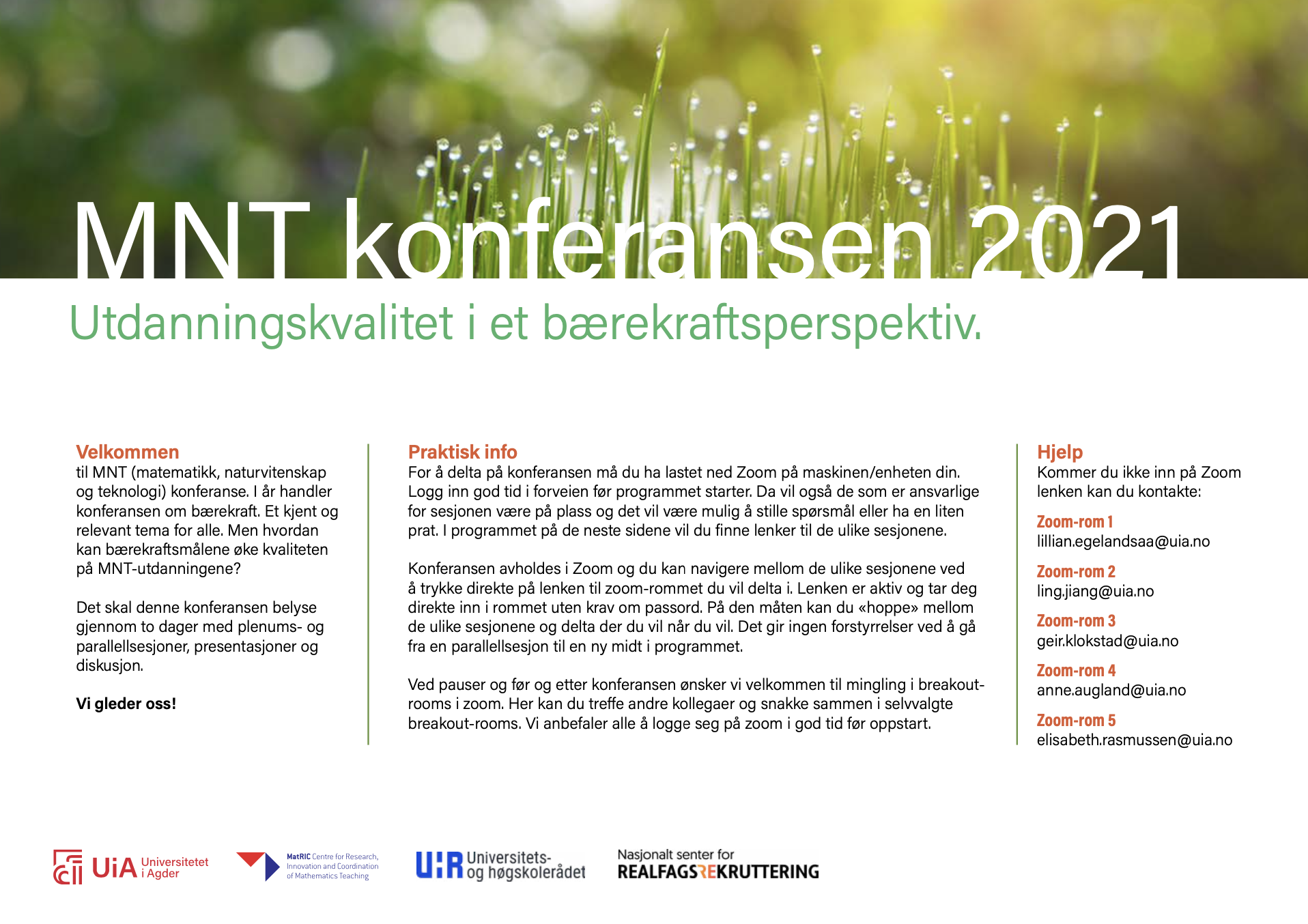Online mathematics teaching and learning during the COVID-19 pandemic: The perspective of lecturers and students
DOI:
https://doi.org/10.5324/njsteme.v5i1.3914Abstract
The global spread of the novel coronavirus, Covid-19, reached Norway at the end of February 2020. MatRIC, Centre for Research, Innovation and Coordination of Mathematics Teaching conducted a national survey in Norwegian higher education institutions (HEIs) during June-July 2020 to explore lecturers’ and students’ experiences of online mathematics teaching and learning and to enable sharing of solutions to the challenges encountered. One hundred and twenty-seven students and eighteen lecturers participated in this survey. In this presentation, we will share some of the findings of the survey in relation to the following two themes: challenges of learning and teaching mathematics online, and the psychological impact of lockdown on student learning and lecturer teaching. The study findings show that many students missed the social contact, being physically present at the university, and face to face interaction with their lecturers. Additionally, several students experienced a degree of anxiety through the lockdown period to the extent that they perceived their learning was negatively affected. Lecturers took a number of steps to ensure lines of communication remained open. Our findings show that simple actions by the lecturer to open channels of communication can be very effective.
Nedladdningar
##submission.downloads##
Publicerad
Referera så här
Nummer
Sektion
Licens
Copyright (c) 2021 Fazad Radmer, Simon Goodchild

Det här verket är licensierat under en Creative Commons Erkännande 4.0 Internationell-licens.
The Nordic Journal of STEM Education licenses all content of the journal under a Creative Commons Attribution (CC-BY) licence. This means, among other things, that anyone is free to copy and distribute the content, as long as they give proper credit to the author(s) and the journal. For further information, see Creative Commons website for human readable or lawyer readable versions.
Authors who publish with this journal agree to the following terms:
1. Authors retain copyright and grant the journal right of first publication with the work simultaneously licensed under a Creative Commons Attribution License that allows others to share the work with an acknowledgement of the work's authorship and initial publication in this journal.
2. Authors are able to enter into separate, additional contractual arrangements for the non-exclusive distribution of the journal's published version of the work (e.g., post it to an institutional repository or publish it in a book), with an acknowledgement of its initial publication in this journal.
3. Authors are permitted and encouraged to post their work online (e.g., in institutional repositories or on their website) prior to and during the submission process, as it can lead to productive exchanges, as well as earlier and greater citation of published work (See The Effect of Open Access

